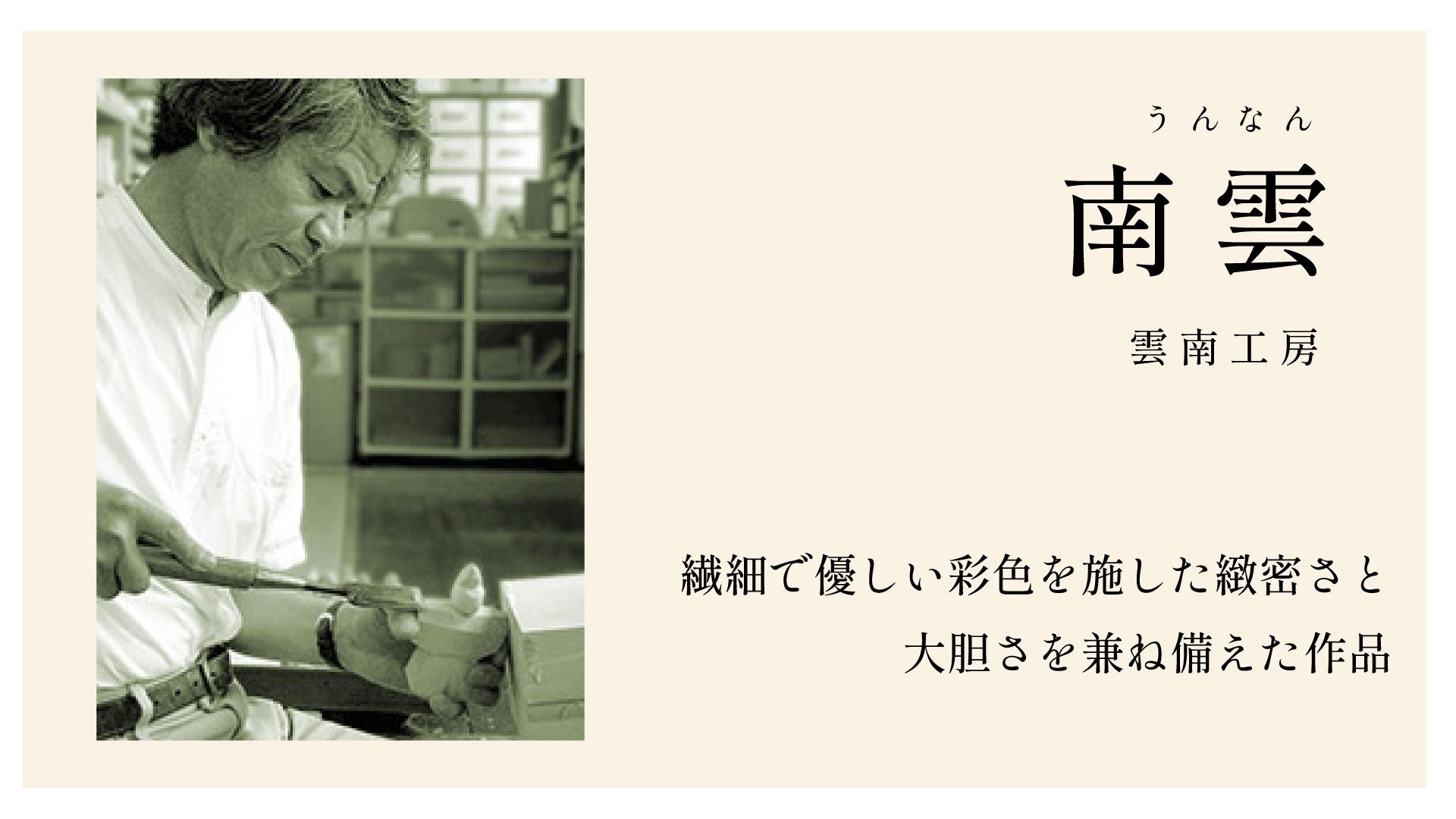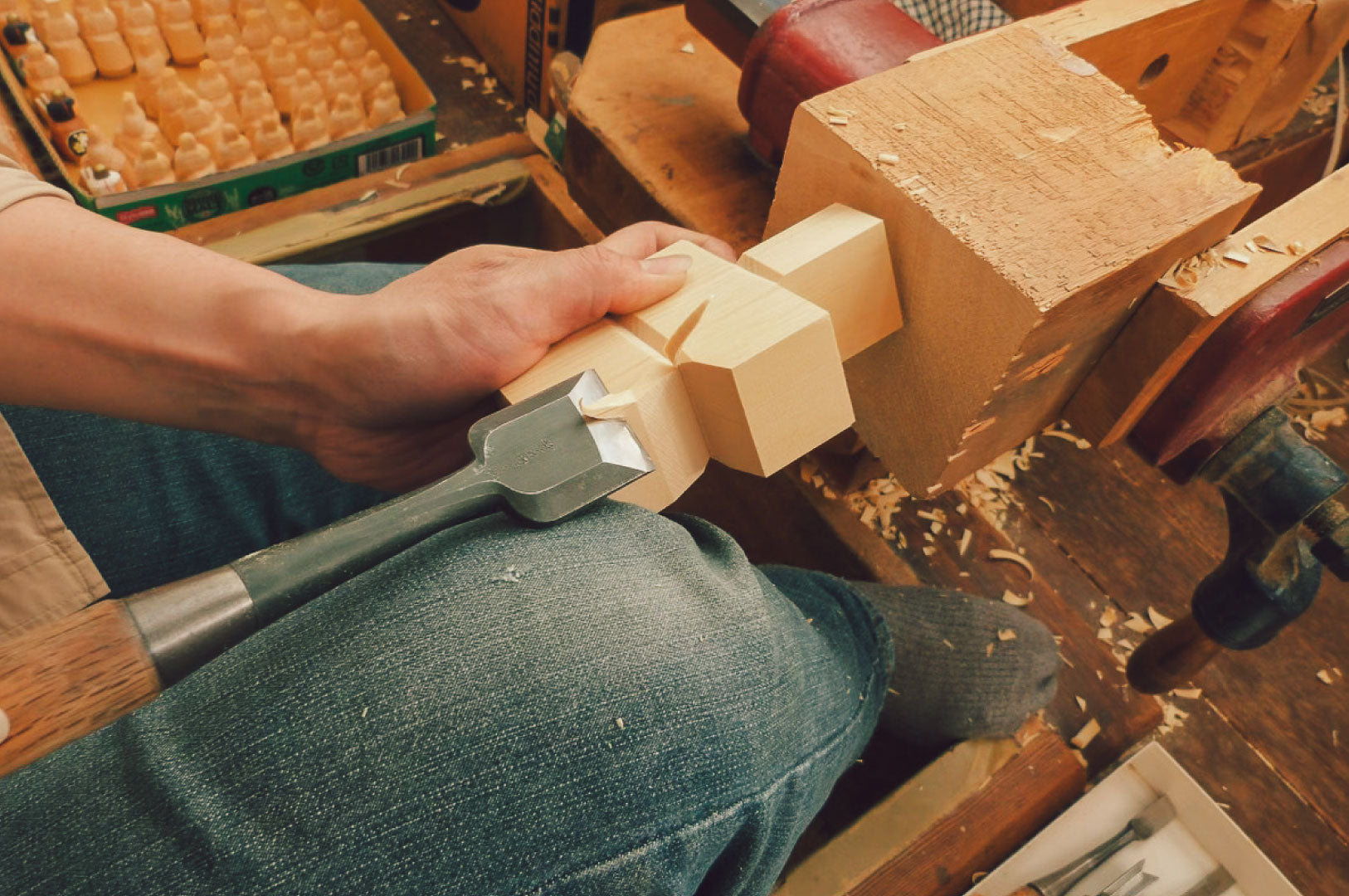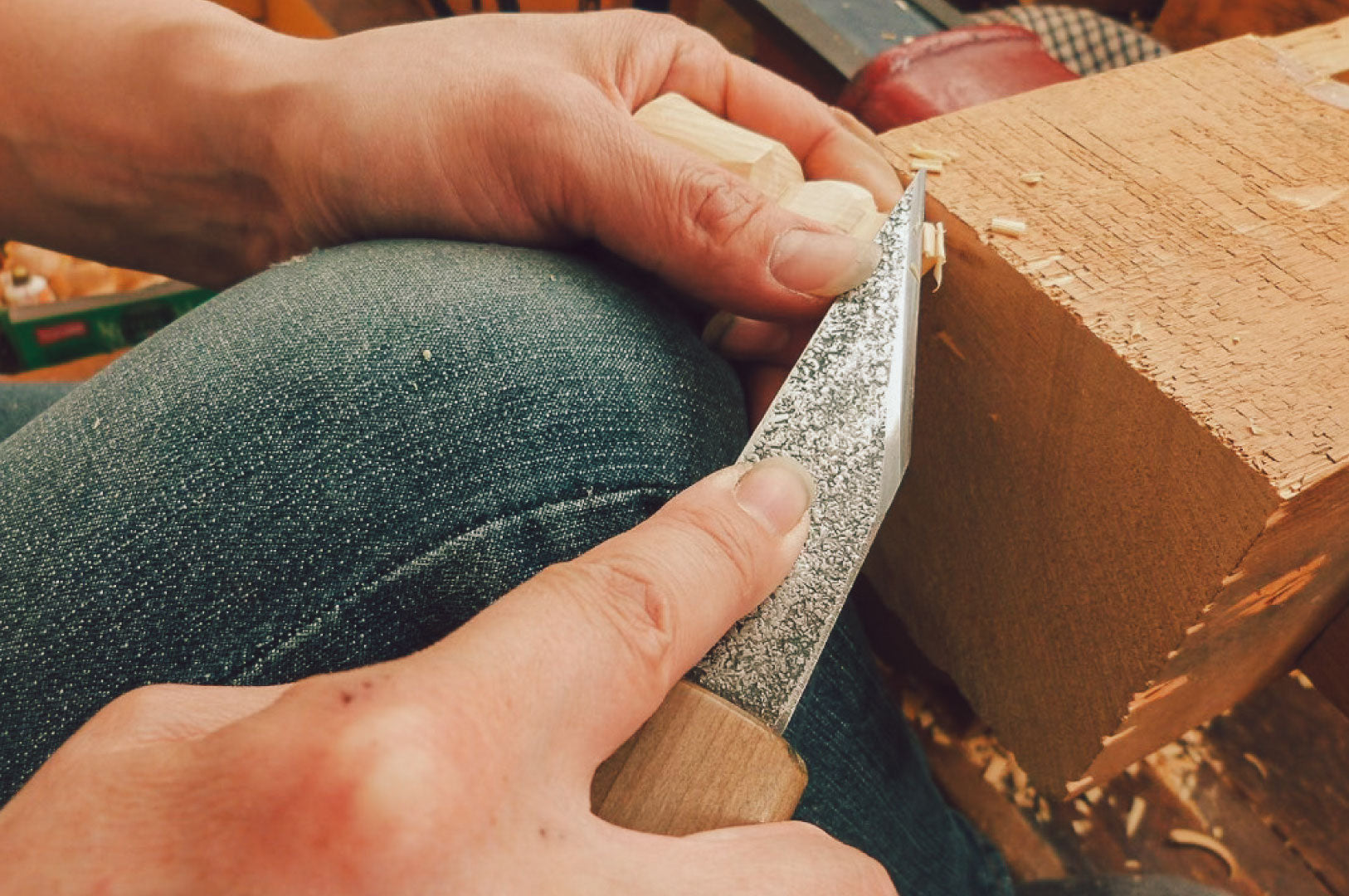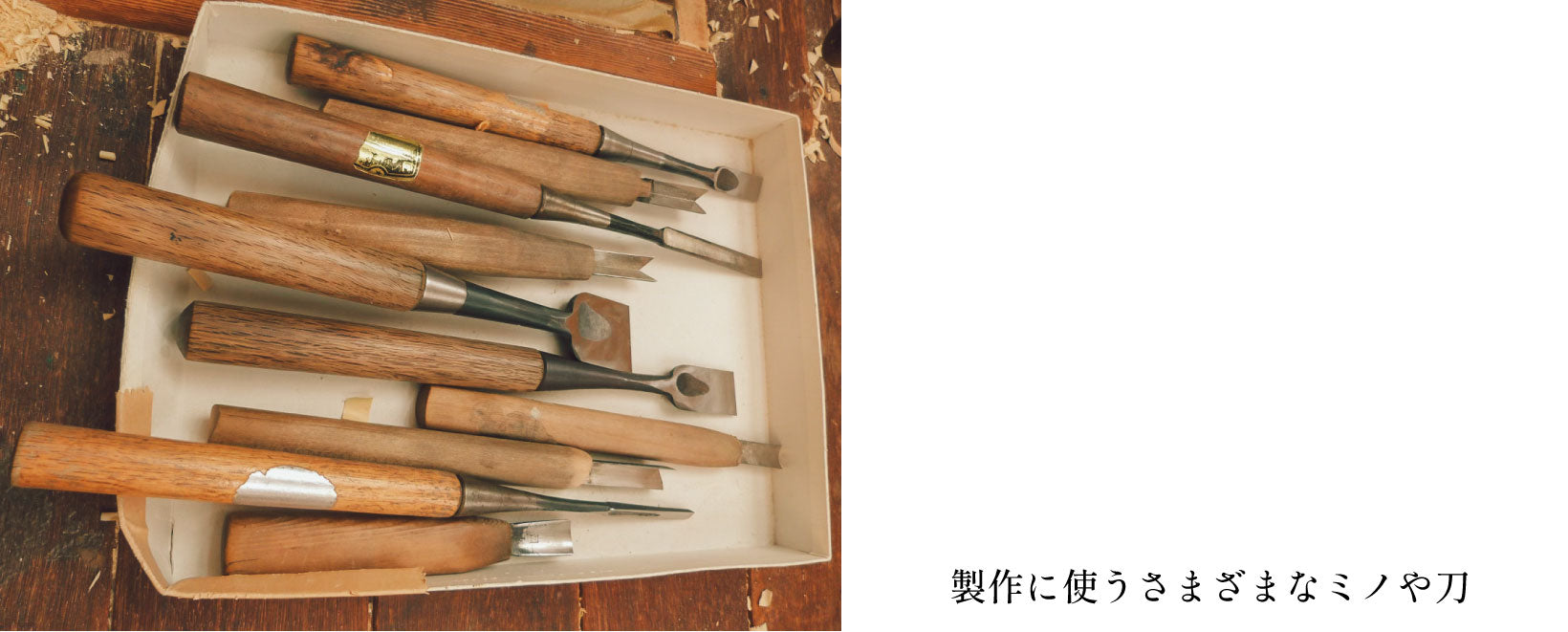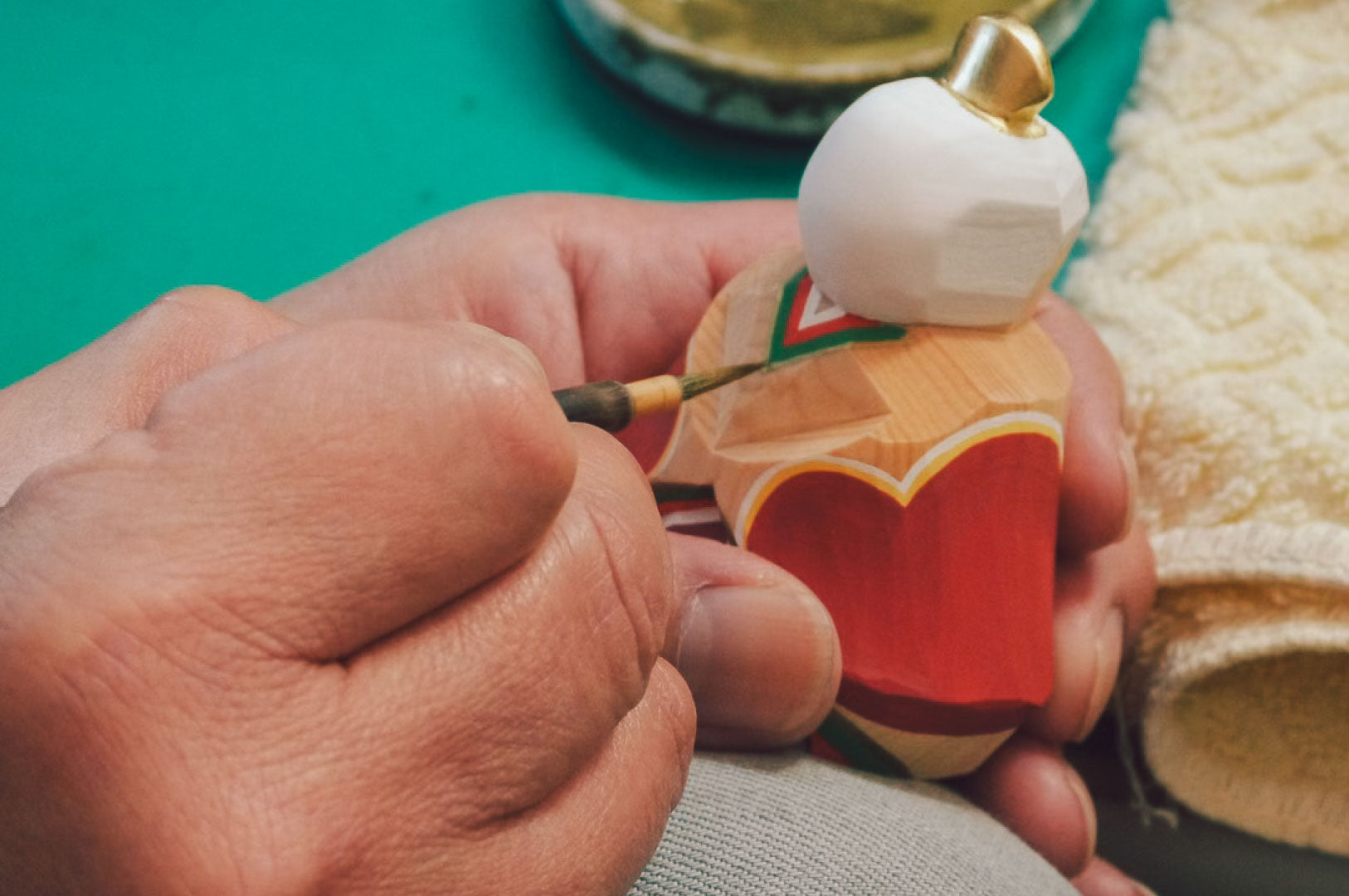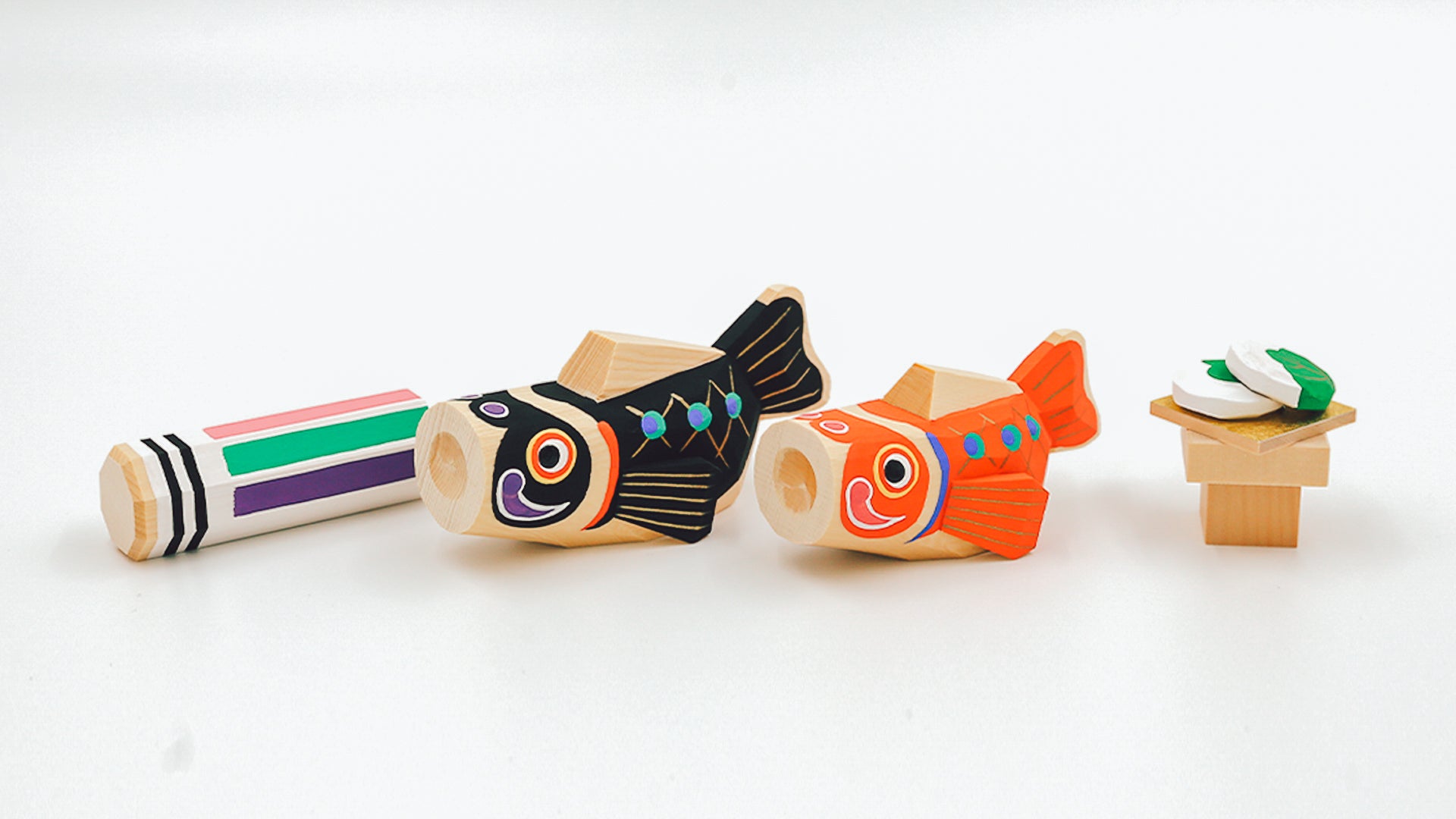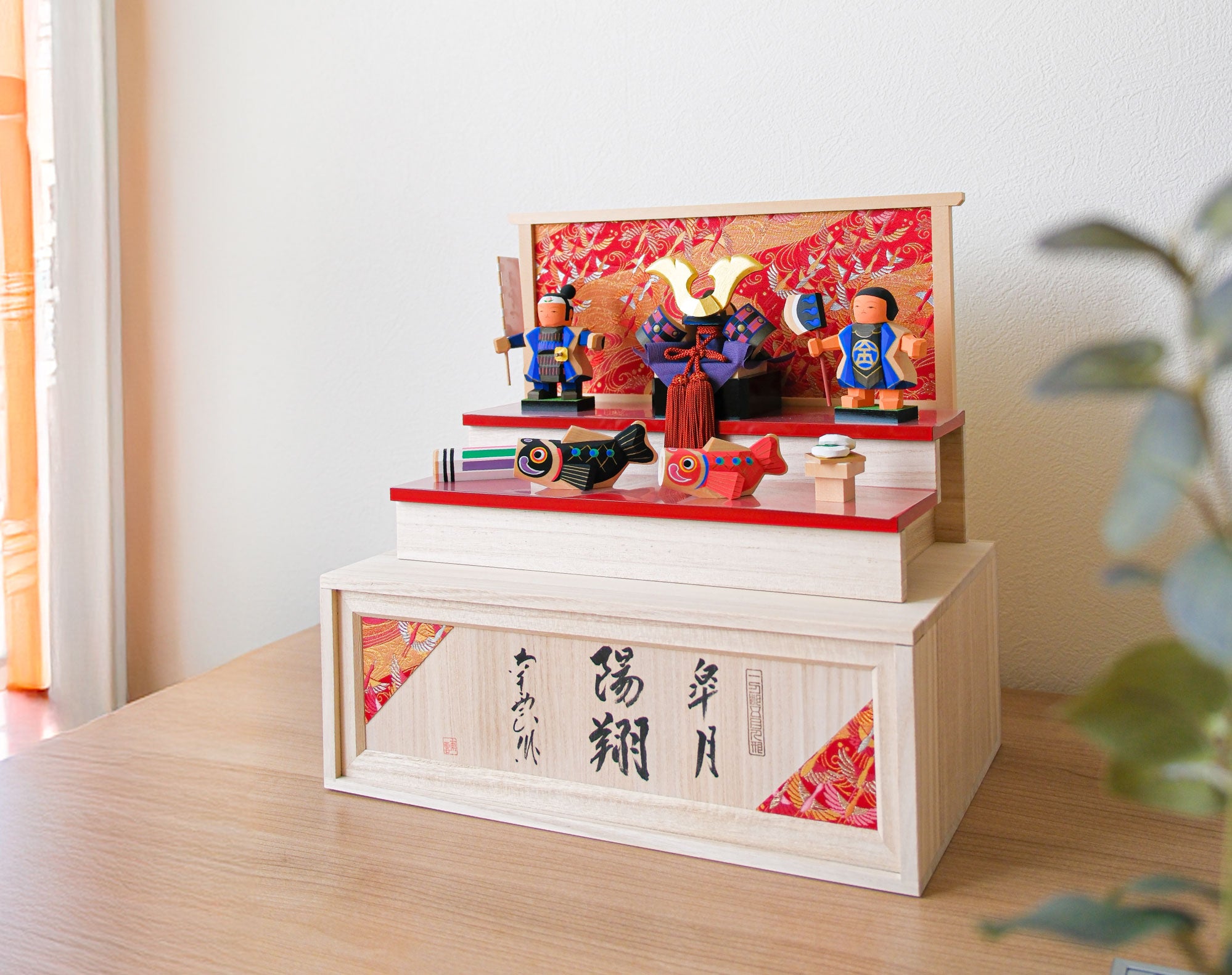"Yunnan" is produced at the "Yunnan Workshop" in Matsuyama City, Ehime Prefecture (formerly Iyo Province).
The first Nagumo was born in Dogo, Matsuyama in 1916. At the age of 13, he aspired to become a Buddhist sculptor (a sculptor of Buddhist statues), and established the "Iyo Folk Crafts Workshop" in Uomachi, Matsuyama, where he began working on creating wooden dolls. Alongside carving Buddhist statues, he also worked on creating wooden dolls using the traditional woodcarving technique of "Ittobori." This was the beginning of "Iyo Ittobori."
Ittobori is a woodcarving technique that removes unnecessary lines from the shape of an object to create a simple expression. The "itto" in ittobori does not mean one sword, but rather a "simple" shape.
Works created using this technique are simple and have a deep flavor, directly conveying the sharpness of the carving knife.
The technique is passed on to the second generation Nagumo (Nishikawa Ryuichi).
Upon graduating from high school in 1966, he began studying under the first Nagumo.
In 1824, he took the name Nagumo.
With the theme of "The Four Seasons of Japan and Wooden Dolls," he continues to create his own unique works while inheriting the spirit of his predecessors.
Currently, at the Nagumo Studio in Matsuyama, Ehime Prefecture (formerly Iyo Province), sculptures are made with refined lines.
He creates works with a new feel that combine precision and boldness with delicate and soft coloring.
■ Brief biography of the second generation Nagumo (Ryuichi Nishikawa) ■
1948: Born in Matsuyama, Ehime Prefecture 1966: Graduated from the Design Department of Ehime Prefectural Matsuyama Minami High School and studied under the first Nagumo 1975: Received the "Nihon Kotsusha President's Award" from the National Tourist Souvenirs Review Committee 1979: Started creating original dolls with the theme of "The Four Seasons of Japan and Wooden Dolls" Received the "Grand Prize" from the Japanese Folk Crafts Competition
1999: Received the "Technology Award" at the Ehime Living Crafts Competition. 2004: The zodiac ornament "Sanbaso" was adopted for the nationwide New Year's postage stamp design. 2006: Received the "Excellent Award" at the Japan Folk Crafts Exhibition for the zodiac ornament "Leap."
2008: Winner of the "Excellence Award" at the Japanese Folk Crafts Exhibition, "Yokozuna" Zodiac Decoration
2008: Matsuyama Brand New Product Contest NEXTONE "Encouragement Award" for Hina Doll "Spring Stage"
2009: Winner of the Japan Broadcasting Corporation Chairman's Award at the Japanese Folk Crafts Exhibition for the Hina Doll "Hana Dai"
2010: Won the Japan Chamber of Commerce and Industry President's Award at the Japanese Folk Crafts Exhibition for the Hina Doll "Sakura Hina Ten-person Decoration"
2011: 21st Century Ehime Traditional Crafts Grand Prize, First Place, "Second Place" Award, Hina Doll "Sakura Hina 15-person Decoration"
2011: Won the "Excellent Award" at the Japan Folk Crafts Exhibition for May Doll "Satsuki Ouka"
2012: Winner of the "Excellence Award" at the Japan Folk Crafts Exhibition, Zodiac sign: Snake, "Good fortune"
2013: Received the "Ai TV President's Award" at the 21st Century Ehime Traditional Crafts Grand Prize for "Moonlit Night Orchestra"
2016: The zodiac decoration "Rooster" was adopted for the design of the nationwide New Year's postage stamps. Received the "Excellent Award" at the 21st Century Ehime Traditional Crafts Grand Prize. "Changing Winds"

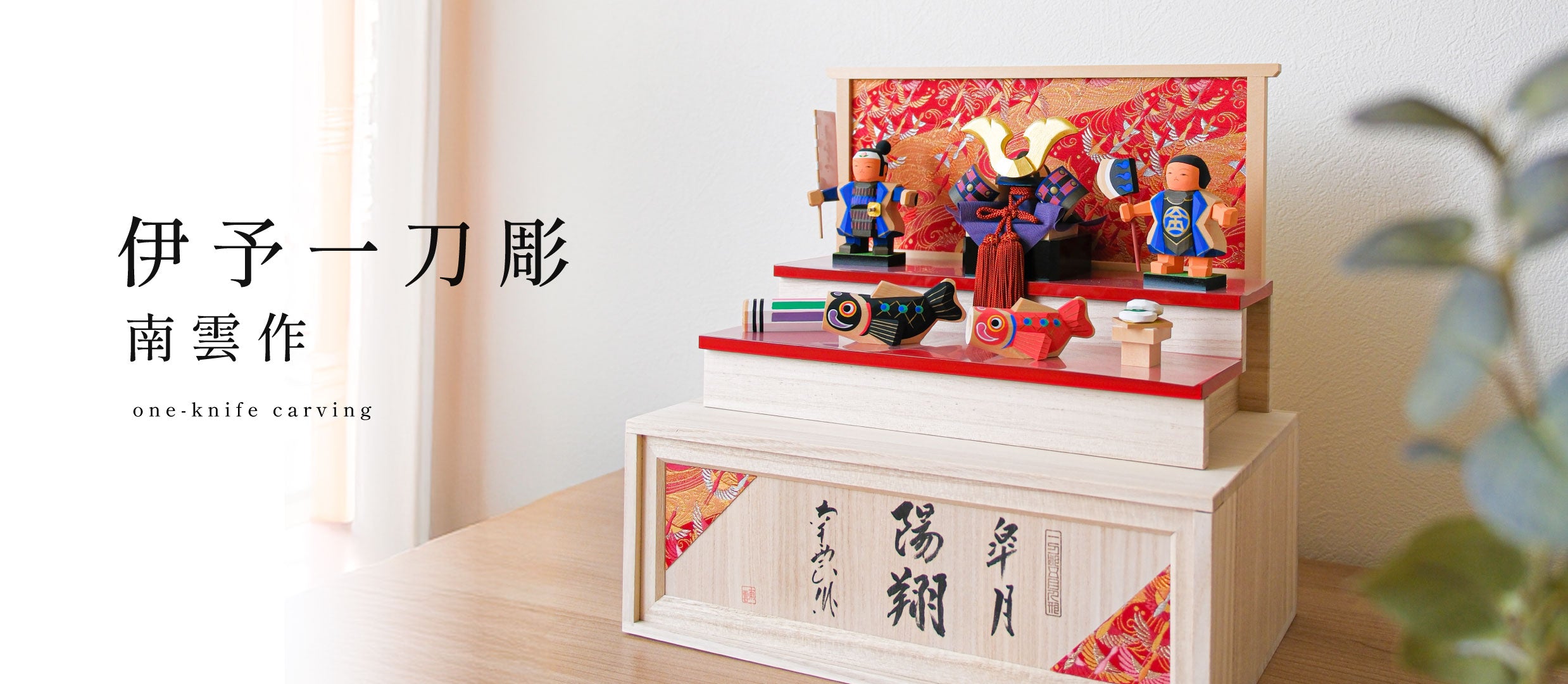
![Hina dolls Iyo Ittobori [by Nagumo] Ten Sakura Hina dolls](http://hare-kura.com/cdn/shop/files/ittoubori_sakura01.jpg?v=1700033903&width=533)
![Hina dolls Iyo Ittobori [by Nagumo] Ten Sakura Hina dolls](http://hare-kura.com/cdn/shop/files/ittoubori_sakura02.jpg?v=1700033902&width=533)
![Hina doll Iyo Itto carving [by Nagumo] Hiyori](http://hare-kura.com/cdn/shop/files/hiyori_01.jpg?v=1699937206&width=533)
![Hina doll Iyo Itto carving [by Nagumo] Hiyori](http://hare-kura.com/cdn/shop/files/hiyori_03.jpg?v=1699937206&width=533)
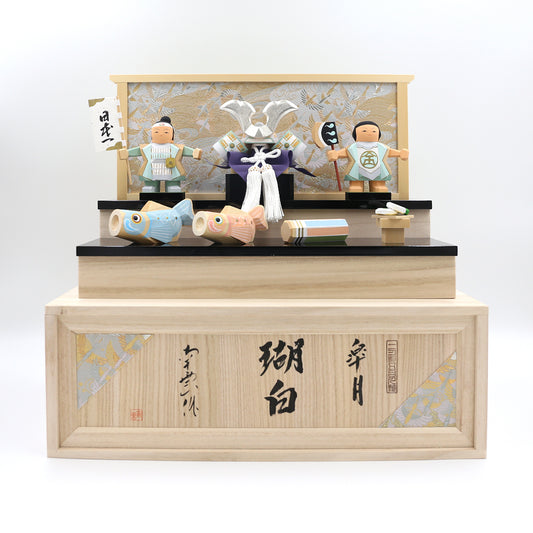
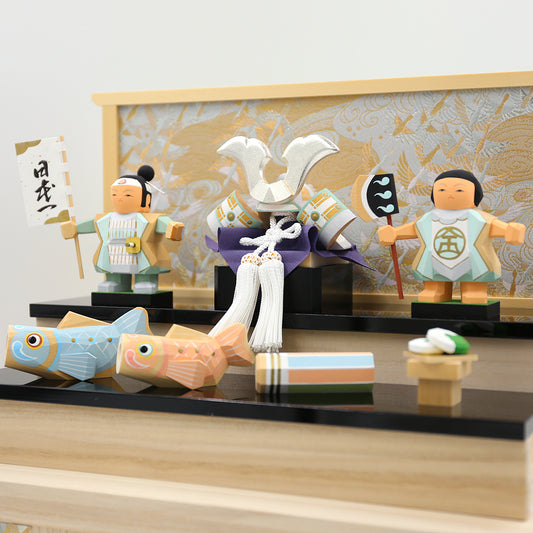
![May Doll Iyo Ittobori [Made by Nagumo] Haruto](http://hare-kura.com/cdn/shop/files/ittoubori_haruto10.jpg?v=1700274685&width=533)
![May Doll Iyo Ittobori [Made by Nagumo] Haruto](http://hare-kura.com/cdn/shop/files/ittoubori_haruto11_096adfea-30d1-45ba-86d0-bc497bac5757.jpg?v=1700274685&width=533)





